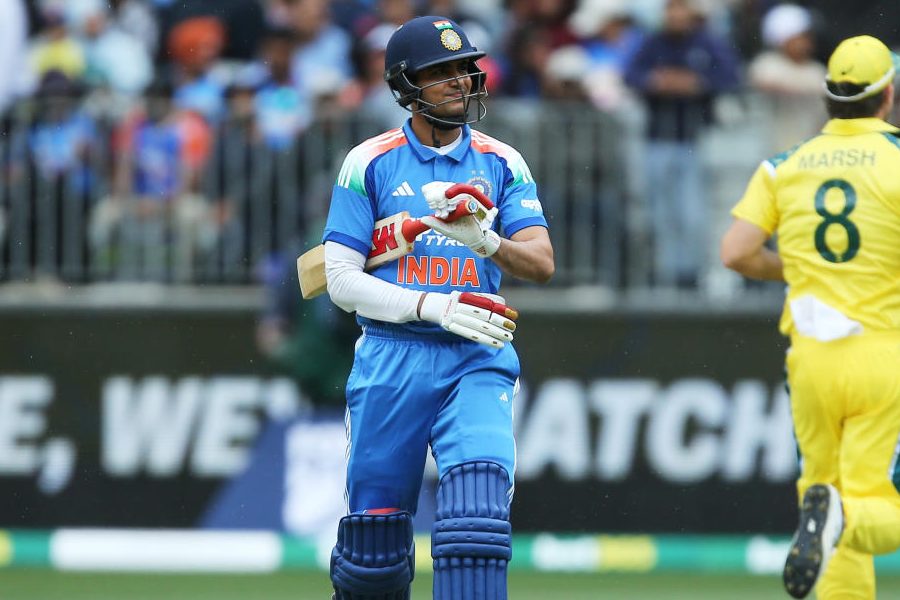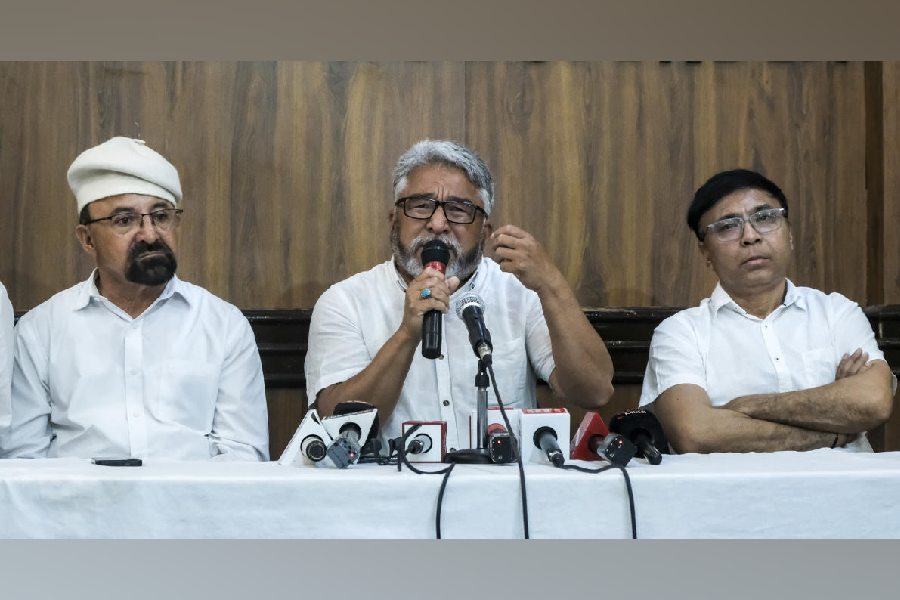Sociology and psychology, disciplines anxious to generalize, have given football fans the academic treatment for years: anomie, plebeian male-bonding, inner-city tribalism, the decline of community, the rise of working-class racism, every ready-to-wear idea available has been tried on football hooligans to kit them out as worthy subjects. Nobody has done the same for cricket fans. This is largely because cricket's followers tend not to be alienated and violent. At least they don't routinely go berserk, although they can. On the eve of a test match at Eden Gardens, where spectators have sometimes turned matches on and off at will, a little speculation on the nature of cricket's following is permissible.
While the rich and the poor form part of cricket's audience in India, it mainly appeals to the people in between. This conveniently elastic category isn't really the middle class: it is, rather, that class of urban Indians that has some English, from just howzatt at one end of the spectrum to hermeneutics at the other.
Till Doordarshan began telecasting matches in the Seventies, cricket's audience listened to the game more than watched it. Cricket, like revealed religion, depended on the Word and its interpreters. Radio commentary was religion because it transported you to unseen, unknown realms. 'This is All India Radio. We now take you over to the Eden Gardens for a running commentary on the fifth day of the fourth cricket Test between England and India. Our commentators are...'
When I started listening in the mid-Sixties, these commentators were Chakrapani, Pearson Surita, and the unspeakable Maharajakumar of Vizianagaram aka Vizzy. Fortunately, A.F.S. Talyarkhan had stopped broadcasting by then, because if his columns in Blitz were anything to go by, he must have been a dreadful windbag. Vijay Merchant used to do the expert commentary. Devraj Puri and Anant Setalvad came later. So did Suresh Saraiya, but once he got into the box he never stopped talking: it was commentary as a continuous loop of speech with no beginning or end, where to pause was to admit defeat, where radio silence was dead time.
Hindi commentary used to be broadcast on a separate frequency till AIR thriftily merged the two so that every twenty minutes the listener travelled from a game in which the ball was bowled to one in which the ball was thrown because Hindi didn't have a word for 'bowled' and was too proud to borrow an English one. The definitive Hindi commentator was Jasdev Singh. He knew nothing about the game but his voice was calm, and he conveyed the events on the field to you with a kind of prissy accuracy which was a welcome departure from the chronic agitation of other Hindi commentators who tried to make up for their lack of cricketing lore and insight with bursts of hysterical excitement: aur veh OUT!!
Anyway, the mid-Sixties was also the time when portable transistor radios became affordable and the respectable urban poor, wobbling on cycles, could be seen carrying largish sets, antennae extended, speakers crackling with Vividh Bharati, Radio Ceylon or cricket commentary. The point is that cricket, though enjoyed for its own sake, was also tied in complex ways to an aspiration to be respectable and middle class. The reason cricket's spectators were generally peaceful was that they wanted to belong, unlike English football crowds for whom football stadiums were arenas where they could act out their alienation from a bourgeois world.
The relative tameness of cricket's audiences has also something to do with cricket's fans being raised, till recently, on radio commentary. Listening to a complex game being described needed concentration, attention span, an engagement with the game's traditions, and some use of the imagination to fill in the bits the commentators left out. Radio socialized thousands of Indians into cricket, but it also taught them deference: it gave them a set of second-hand opinions on everything and left them dependent on authoritative commentary.
Till the Eighties, it was commonplace to see spectators at the ground watching the action in the middle with a transistor radio pressed to their ears. They were in the stadium watching but to understand what was happening they needed those familiar voices naming the fielders, describing the shots played, measuring out praise and blame. Most of all, they needed those familiar phrases ('runs in to bowl', 'played back along the pitch', 'walks back to the top of his bowling mark') to set out the leisured rhythms of the game. Cricket is to sport what dhrupad is to music and both set great store by tradition, arcane knowledge and connoisseurship. Radio commentary, in the terms of this analogy, is the reassuring tanpura drone that anchors the performance.
It is important to acknowledge that cricket crowds aren't always peaceful. I can remember the time Brabourne Stadium, Bombay, erupted when the umpire, Sambhu Pan, gave Venkataraghavan out in the 1969-70 series against Bill Lawry's Australians. The crowd disagreed and decided to burn and otherwise damage the stadium. But unlike soccer hooligans, who are violent in gangs and whose violence is directed at each other, the Brabourne Stadium rioters were protesting an injustice against the home team and their rage was directed at public property. Significantly, this vandalism had been provoked by the observations of a radio commentator, Devraj Puri. Puri declared that Venkataraghavan had been wrongly given out by the umpire. For the thousands of fans inside Brabourne Stadium who depended on the wise men inside their radios to understand what was going on, for whom Akashvani supplied the first and last word on the game, it was as if a higher authority had struck down the verdict of a fallible earth-bound umpire. Even in their violence they were deferential.
With the ascendancy of one-day cricket and the related capture of the game by television, cricket's following in India changed. The game became more accessible. Watching was more literal than listening: you didn't need a commentator to bring you the game entire, you needed him for a gloss on the game. The game became a spectacle for the simple reason that you could see it. The limited overs game dramatized the spectacle by simplifying the game and thus making it even more accessible to those who had neither the time nor the inclination to learn to like the five day game.
Untutored in the deference taught by radio, this television-raised generation of spectators goes to the stadium not to watch the game (that can be better done at home via slow-motion replay) but on the off-chance that the cameras might be watching them. Where an earlier generation had been taught to revere cricket by a broadcasting monopoly, this one grew up watching the game as one entertainment among many others supplied by cable television, all meant to sell colas and tyres. Television money revived the game, but it also trivialized it because entertainment isn't as serious a matter as religion. So where once angry cricketing crowds at Brabourne Stadium burnt the stadium down, the last time Indian crowds stopped a match at Eden Gardens, they did it by throwing plastic cola bottles on the pitch. In this epoch of cable cricket, even the violence feels sponsored.
mukulkesavan@hotmail.com
 Monday, 20 October 2025
Monday, 20 October 2025









